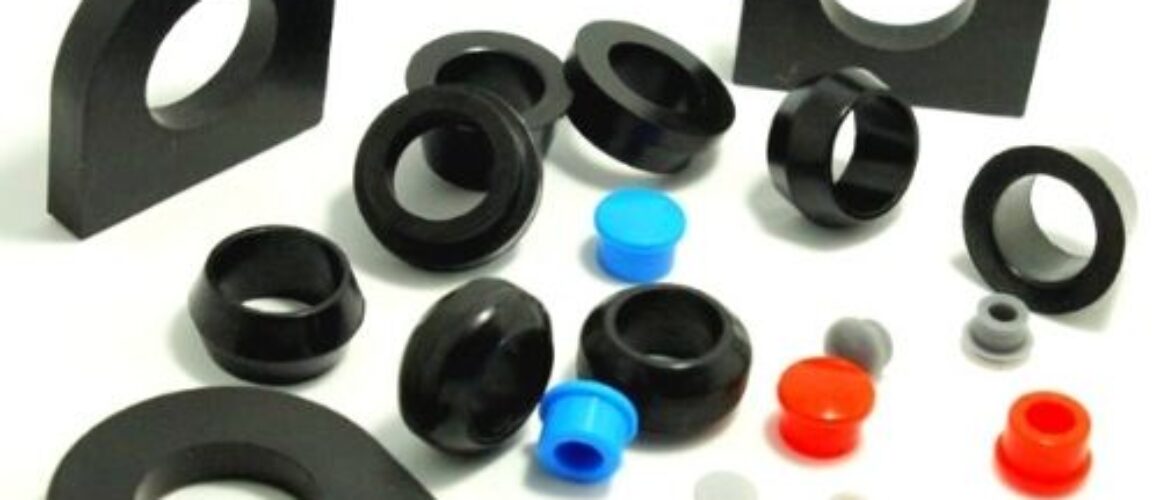Your Guide To Rubber Bushes
What if you had to tolerate a string of annoying noises and unwanted vibration every time you drove your car? It’d be pretty frustrating, right? This is why we have RUBBER BUSHES, which help isolate the sound and vibration in your car.
A rubber bush is placed between the two parts of a machine to limit their motion and absorb the sound and vibration produced by their interaction. Although they were originally produced as part of automobile manufacturing, now they serve an important function in other industries too. In addition to that, they can be customized in any shape and configuration to fit any type of application.
It can be said that they are used to reduce three things: vibrations, sound, and noise. They can be produced from either natural rubber or synthetic rubber, depending on their usage. While natural rubber bushes have high tensile strength and are tear resistant, they are not ideal to be used for high temperature applications or exposed to chemicals or oil.
There are several types of rubber bushes, which are used for different purposes:
- Conical Rubber Bushings: They are made from silicone rubber and can survive high temperatures. They are compatible with oil and grease. They are an integral part of the automotive and marine industry.
- Leaf Spring Bushings: They provide a cushion for the springs on a vehicle and can withstand enormous torsional and radial loads. They are encased in steel or rubber and primarily used on the front eye of automotive springs.
- Rubber Sleeve Bushings: They are used to provide an insulating lining and good abrasion protection to the parts of the equipment. There are different forms of rubber sleeve bushing, such as suspension system sleeves, bearing sleeves, shaft sleeves, etc.
- Flanged Bushing: In this, one end extends laterally and outward. They are usually made of SBR or EPDM and have high ability to support axial loads.
- Control Arm Rubber Bushings: They are mainly used to prevent metal-to-metal contact. They are used to protect the control arm of a vehicle from resting on the frame.
- Rubber-Metal Bonded Bushings: They are extremely common and are formed by bonding rubber and metal together.
- Cylindrical Bushings: They are made of stainless steel and natural rubber and are used for active and passive vibration applications.
- Reducer Bushing: It connects cast iron, steel, plastic, or copper piping for non-pressure, gravity-flow applications.
- Heavy-Duty Bushings: They use extra rubber to produce a more solid form to prevent wear and tear. They are likely to be noisier, but they can provide great protection and performance!
- Shock Bushings: They buffer and isolate the vibrations and are mainly used in automobiles and skateboards.
Due to their versatility, suitability, shock-absorbing ability, and resilience, they are used not just in industrial processes but also in commercial and residential processes. Some key applications that they are used for are as follows:
- Automobile: They serve the function of assisting in controlling the vehicle by protecting wire lines, pipes, and tubes. They are also used in anti-roll bars, shock absorber mounting, double wishbone suspensions, and gear sticks in cars. Without them, you cannot have a smooth and stable ride.
- Skateboard: They are connected to the board’s axle to help in tilting and turning the board.
- Tanks: In order to seal a connection when a pipe passes through the wall of a tank, rubber bushing is used. It can be installed on the top above or below the waterline.
- Fans & Blowers: To suppress vibration in fans and blowers, rubber bushes are used.
Kesaria manufactures rubber bushings of different shapes and sizes made from a variety of materials, such as Neoprene, NBR, Nitrile, Silicone, EPDM, and Natural Rubber. If you have any questions for us, drop us a mail at info@kesaria.com, and we will get back to you at the earliest!


